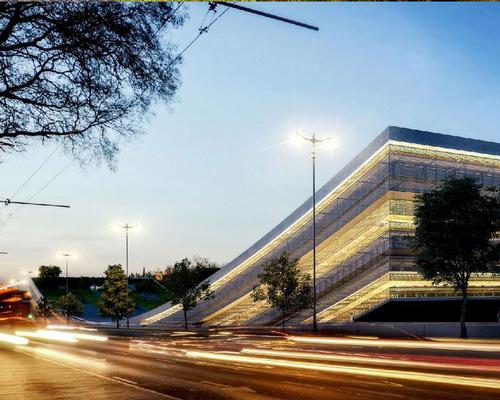30 Dec 2017
Work begins on Hungary's curving, golden Museum of Ethnography
BY Kim Megson

Construction of the new Museum of Ethnography is underway in Budapest, Hungary.
Site clearance has begun in Városliget (City Park) and work started on the foundations of the 31,400sq m (338,000sq ft) building, which will be formed by a gradually curving convex volume with an intricate, partly-golden patterned facade and a grass-covered roof.
Hungarian architects Napur won an international design competition for the project in May 2016 – overcoming high-profile competition from 14 other design teams, including the likes of MVRDV, Bjarke Ingels Group (BIG) and the Office for Metropolitan Architecture.
Speaking to CLADglobal after the win, Napur senior architects Marcel Ferencz and György Détári said: “It’s a great feeling to be honoured with a first prize in an international competition. We did not expect it. Our first goal was just to find a correct form for the place.
“Innovation for us does not mean for us to use new technologies or new materials. It’s using common structures and materials to achieve the dreamt of architectural effect.”
Architects and designers Rudolf Mihály, Orfi József, Bodonyi Csaba, Dávid Papp and Exon 2000 are also involved in the project, which will house a collection of more than 200,000 ethnographic artefacts and 400,000 of Hungary's historical documents.
In total, 17,000sq m (183,000sq ft) of the building will be beneath ground level, meaning visitors will be able to make their way gradually from the museum’s landscaped roof and down beneath the surface of the earth.
In 2015, French studio Vallet de Martinis DIID Architects won a competition to design a new home for the museum, but the competition was rerun after the prospective site of the project was changed.
The Museum of Ethnography is a major component of a wider HUF75bn (US$285m, €240m, £213m) museum quarter scheme in Budapest’s City Park, called ‘Liget’ – described by the Hungarian government as “an urban public park for relaxation, a green oasis, and a home to institutions of culture, entertainment and recreation”.
Other museums in the area will include the House of Hungarian Music designed by Sou Fujimoto, the New National Gallery by SANAA and the Museum of Hungarian Architecture by KÖZTI Architects & Engineers. A large swathe of parkland will also be regenerated, with thousands of trees planted.
The quarter has been projected to draw an extra 300,000 tourists to Budapest every year, as the city tries to compete with other popular culture destinations across Europe, such as Prague and Barcelona.
Close Window